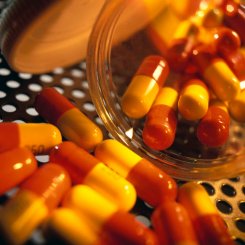Home Page
The latest articles, features and news.


Read About...


|
| | |
|
8 December 2011
Researchers give thumbs-up to HIV pre-exposure prophylaxis
by George Atkinson  Pre-exposure prophylaxis (PrEP), a strategy of providing medications to at-risk people before they are exposed to the HIV virus, appears to be sound, with UCLA researchers saying that fears of skyrocketing drug resistance are unfounded.
Pre-exposure prophylaxis (PrEP), a strategy of providing medications to at-risk people before they are exposed to the HIV virus, appears to be sound, with UCLA researchers saying that fears of skyrocketing drug resistance are unfounded. UCLA's Sally Blower, reporting her team's findings in Scientific Reports, explained how they used computer modeling to determine that a PrEP prevention program used alone, or current HIV treatment programs used alone, could indeed, separately, increase drug resistance. But if used together, she claims, resistance is likely to decrease. "This was a very big surprise," said Blower, who was the study's senior author. "We found that this counterintuitive effect will only occur if adherence to the PrEP prevention program, where individuals have to take a daily pill, is very high. This counterintuitive effect occurs when the beneficial effect of PrEP in preventing infections is so great that it overcomes both its own detrimental effect on increasing resistance and the detrimental effect of current HIV treatments on increasing resistance." The findings have important implications for Africa, which is ground zero for HIV and AIDS. Since the country of Botswana was one of the sites for the PrEP drug trial, Blower and her colleagues chose it for their modeling. Botswana has the best health care system in Africa and health officials plan to implement PrEP prevention programs where treatment programs are highly successful and levels of resistance are low.
But in a second counterintuitive finding, Blower's team say this conventional approach is actually the worst strategy. Instead, they suggest, PrEP programs should be rolled out around treatment programs that are having little success and where rates of resistance are high. Their model shows that this unconventional approach would prevent the maximum number of infections and result in the greatest decrease in drug resistance. "By cutting down infections, the PrEP programs will decrease the number entering treatment programs, and therefore, fewer individuals will acquire drug resistance," Blower explained. "So introducing PrEP around the worst treatment programs will have the most impact on reducing resistance. The model we have designed is a very important health policy and planning tool. It can be used for any African country to decide where to roll out PrEP, as well as to predict the impact of PrEP on reducing their HIV epidemic. It is a critical time for decision-makers in Botswana and other African countries." Related:
Discuss this article in our forum
HIV meds reduce risk of infection in uninfected
AIDS Prevention Campaigns Based On Fear Ineffective
Malaria Tag-Teaming With HIV
Source: University of California - Los Angeles
|
|

